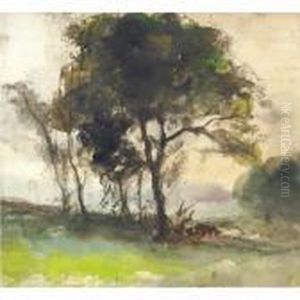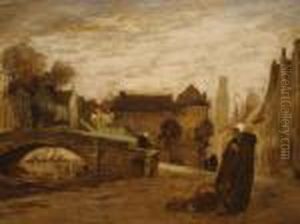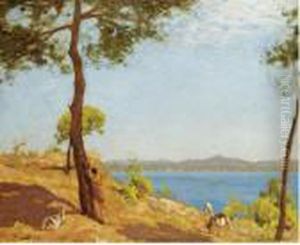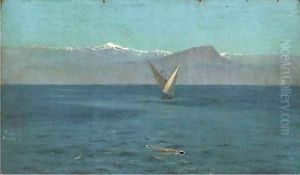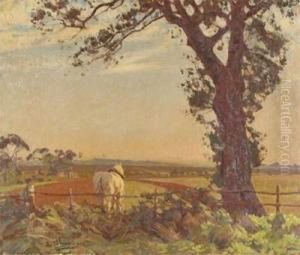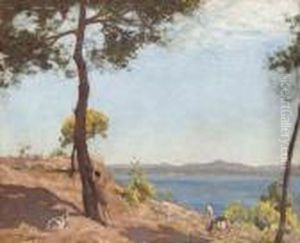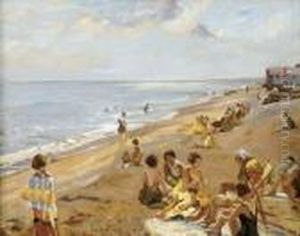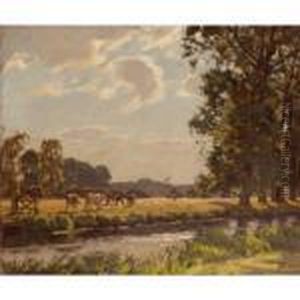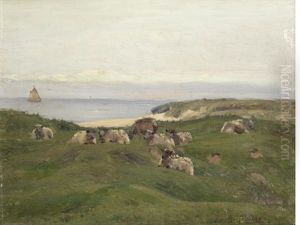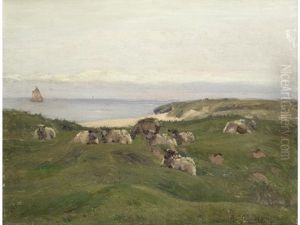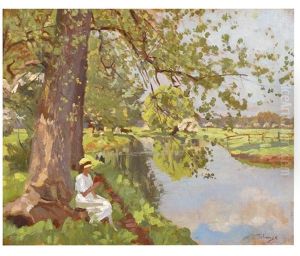Algernon Talmage Paintings
Algernon Talmage was a British painter known for his landscapes and marine scenes, as well as for being a notable art teacher. Born on August 10, 1871, in Fifield, Oxfordshire, he showed an early talent for art which led him to study at the Herkomer Art School in Bushey, Hertfordshire. Later, he continued his studies at the Royal Academy Schools.
Talmage became an established artist, exhibiting his works at the Royal Academy from 1896. His style was influenced by Impressionism, although he maintained a distinctive approach. He was particularly adept at capturing the effects of light and atmosphere in his paintings, which often featured coastal scenes and rural landscapes.
In addition to his painting career, Talmage was also an influential teacher. He taught at the St. John's Wood Art School and later at the Royal Academy Schools. His teaching methods were highly regarded, and he mentored a number of students who went on to become successful artists in their own right.
During World War I, Talmage served as an official war artist, documenting the effects of the war on the landscape and the soldiers. His war-related works provided a poignant and sometimes stark portrayal of the war's impact.
Algernon Talmage was elected as an Associate of the Royal Academy (ARA) in 1919 and became a full Royal Academician (RA) in 1929. His contributions to art were recognized during his lifetime, and he remains a respected figure within British art history.
Talmage's work is held in various public collections, including the Tate Gallery and the Imperial War Museum in London. He continued to paint and exhibit throughout his life until his death on August 3, 1939, in St Ives, Cornwall, where he had moved in the later part of his career to focus on the Cornish landscape that had inspired much of his work.


